Title : Design and construction of generalized vaccine-vector system to protect teleost fish against multiple bacterial, viral and parasitic infectious diseases in aquaculture
Abstract:
We have successfully designed and constructed a RAEV vector system with regulated-delayed attenuation in vivo attributes that synthesizes Ichthyophthirius multifiliis (Ich) protective antigen IAG52B to enable vaccination of fish susceptible to edwardsiellosis and white spot disease. The first feature of this vaccine delivery system is an Edwardsiella piscicida strain carrying genomic deletions of asdA. AsdA is an enzyme necessary for the synthesis of diaminopimelic acid (DAP), which is an essential component of the peptidoglycan layer of the cell wall of Gram-negative bacteria. asdA mutant strains have obligate growth requirements for DAP in the medium or a plasmid vector with the wild-type asdA gene enabling synthesis of DAP. This balanced-lethal plasmid vector-host system in E. piscicida enables as a second feature the synthesis of recombinant antigens to induce protective immunity against fish pathogens. Recombinant protective antigen IAG52B from the fish pathogen I. multifiliis was synthesized by RAEV strains harboring the AsdA+ plasmid pG8R8029. The third feature of this vaccine strain is a regulated-delayed attenuation in vivo phenotype that is based on the replacement of an arabinose-regulated araC ParaBAD cassette for the promoters of the fur and crp genes of E. piscicida such that the expression of these genes is dependent on arabinose provided during growth. Thus, following colonization, the Fur and Crp proteins stop being synthesized due to the lack of arabinose and attenuation is progressively achieved in vivo to prevent generation of diseases symptoms. Our vaccine strain c16022 with the genotype ?asdA10 ΔPfur170::TT araC ParaBAD fur DPcrp68::TT araC ParaBAD crp contains the AsdA+ plasmid, pG8R8029, which encodes the IAG52B antigen. Vaccine strain c16022(pG8R8029) is attenuated and induces systemic and mucosal IgM titer against E. piscicida and Ich in zebrafish. In addition, transcript levels of tnf-α, il-1β, il-6 and il-8 were significantly increased in different tissues of vaccinated zebrafish compared to unimmunized fish. Zebrafish vaccinated with c16022(pG8R8029) showed 60% survival upon intracoelomic (i.c.) challenge with a lethal dose of virulent E. piscicida strain J118.
We also constructed and synthesized Tilapia Lake Virus (TiLV) antigens (Segment 5 and 6) and Aeromonas hydrophila antigens in RAEV, with the expression vector pG8R114. Use of pG8R114 vector with the fusion of antigens to the bla SS (T2SS) leads to the delivery of antigens to the periplasm, resulting in an increased production of outer membrane vesicles (OMVs) that enhance immunogenicity and antibody production against delivered antigens. Zebrafish immunized with RAEV harboring pG8R114-TonB showed 60% higher survival compared to the control groups against virulent A. hydrophila challenge. We developed a new mucosal antigen delivery RAEV system for aquaculture that will prevent important infectious diseases and therefore increase the sustainability and profitability of the finfish aquaculture industry.



